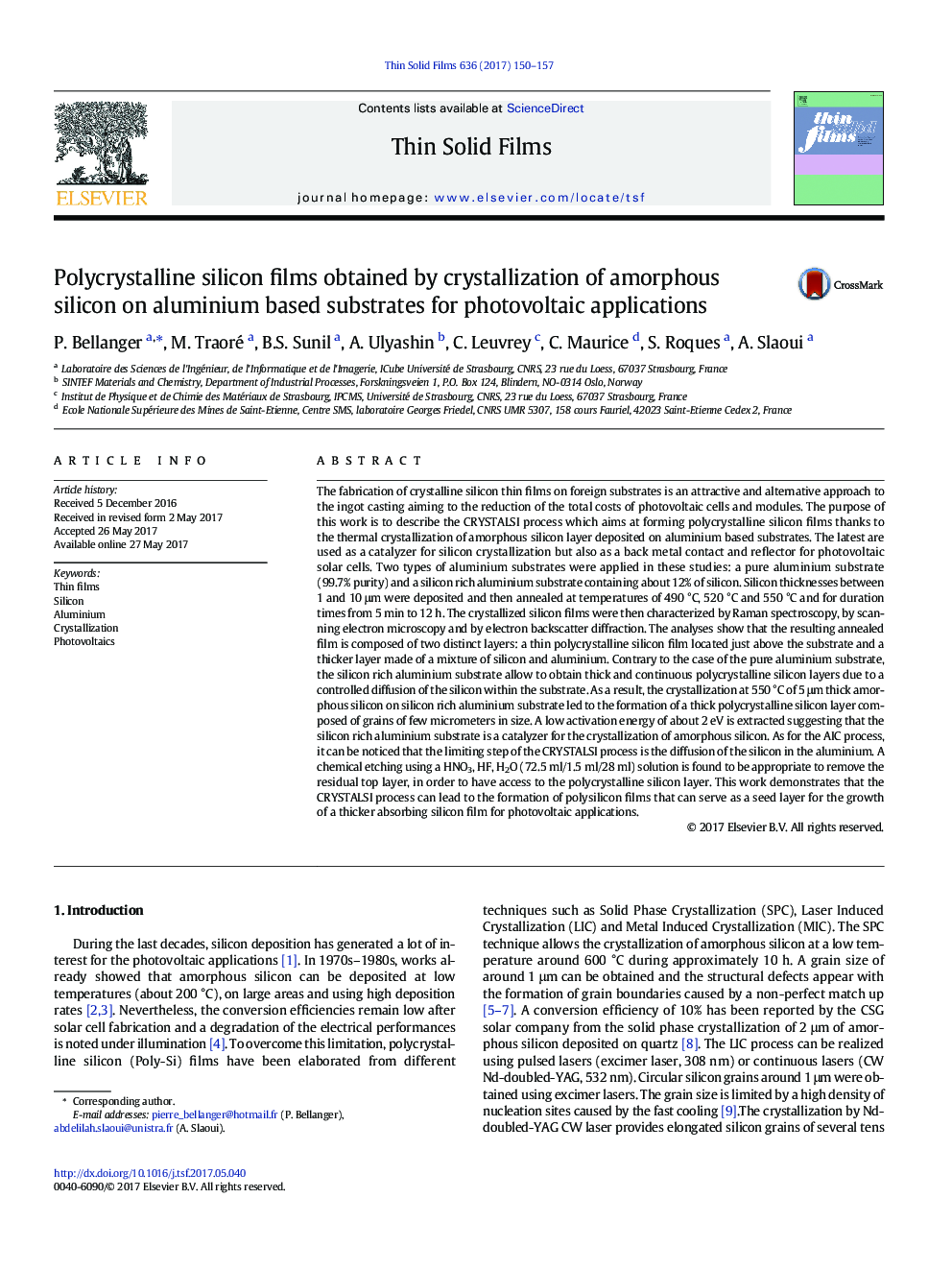| کد مقاله | کد نشریه | سال انتشار | مقاله انگلیسی | نسخه تمام متن |
|---|---|---|---|---|
| 5466002 | 1517976 | 2017 | 8 صفحه PDF | دانلود رایگان |
عنوان انگلیسی مقاله ISI
Polycrystalline silicon films obtained by crystallization of amorphous silicon on aluminium based substrates for photovoltaic applications
ترجمه فارسی عنوان
فیلم های سیلیکونی پلی کریستالی به دست آمده از کریستالیزاسیون سیلیکون آمورف بر روی بستر های آلومینیومی برای کاربردهای فتوولتائیک
دانلود مقاله + سفارش ترجمه
دانلود مقاله ISI انگلیسی
رایگان برای ایرانیان
کلمات کلیدی
فیلم های نازک سیلیکون، آلومینیوم، بلورسازی، فتوولتائیک،
موضوعات مرتبط
مهندسی و علوم پایه
مهندسی مواد
فناوری نانو (نانو تکنولوژی)
چکیده انگلیسی
The fabrication of crystalline silicon thin films on foreign substrates is an attractive and alternative approach to the ingot casting aiming to the reduction of the total costs of photovoltaic cells and modules. The purpose of this work is to describe the CRYSTALSI process which aims at forming polycrystalline silicon films thanks to the thermal crystallization of amorphous silicon layer deposited on aluminium based substrates. The latest are used as a catalyzer for silicon crystallization but also as a back metal contact and reflector for photovoltaic solar cells. Two types of aluminium substrates were applied in these studies: a pure aluminium substrate (99.7% purity) and a silicon rich aluminium substrate containing about 12% of silicon. Silicon thicknesses between 1 and 10 μm were deposited and then annealed at temperatures of 490 °C, 520 °C and 550 °C and for duration times from 5 min to 12 h. The crystallized silicon films were then characterized by Raman spectroscopy, by scanning electron microscopy and by electron backscatter diffraction. The analyses show that the resulting annealed film is composed of two distinct layers: a thin polycrystalline silicon film located just above the substrate and a thicker layer made of a mixture of silicon and aluminium. Contrary to the case of the pure aluminium substrate, the silicon rich aluminium substrate allow to obtain thick and continuous polycrystalline silicon layers due to a controlled diffusion of the silicon within the substrate. As a result, the crystallization at 550 °C of 5 μm thick amorphous silicon on silicon rich aluminium substrate led to the formation of a thick polycrystalline silicon layer composed of grains of few micrometers in size. A low activation energy of about 2 eV is extracted suggesting that the silicon rich aluminium substrate is a catalyzer for the crystallization of amorphous silicon. As for the AIC process, it can be noticed that the limiting step of the CRYSTALSI process is the diffusion of the silicon in the aluminium. A chemical etching using a HNO3, HF, H2O (72.5 ml/1.5 ml/28 ml) solution is found to be appropriate to remove the residual top layer, in order to have access to the polycrystalline silicon layer. This work demonstrates that the CRYSTALSI process can lead to the formation of polysilicon films that can serve as a seed layer for the growth of a thicker absorbing silicon film for photovoltaic applications.
ناشر
Database: Elsevier - ScienceDirect (ساینس دایرکت)
Journal: Thin Solid Films - Volume 636, 31 August 2017, Pages 150-157
Journal: Thin Solid Films - Volume 636, 31 August 2017, Pages 150-157
نویسندگان
P. Bellanger, M. Traoré, B.S. Sunil, A. Ulyashin, C. Leuvrey, C. Maurice, S. Roques, A. Slaoui,
